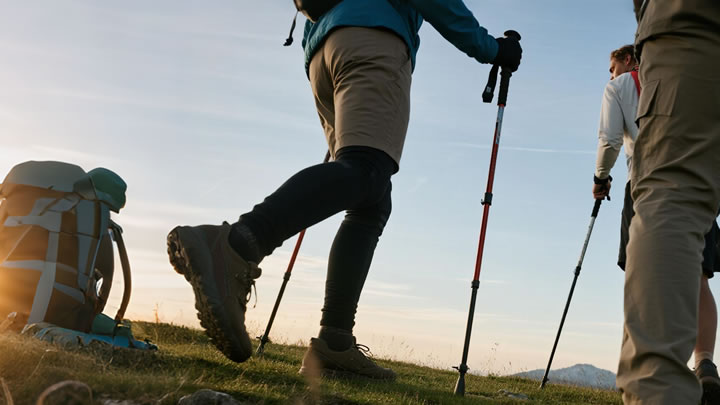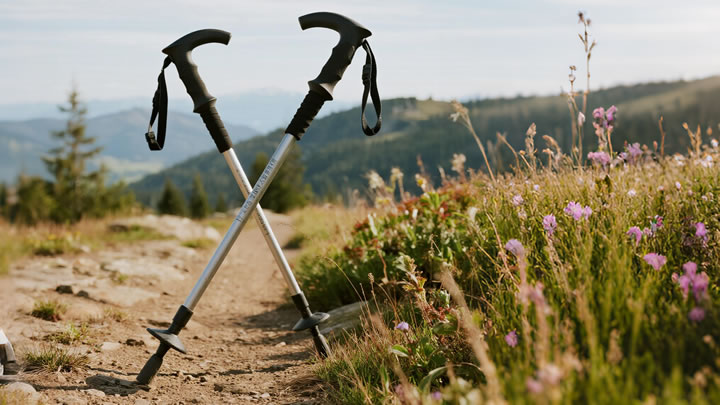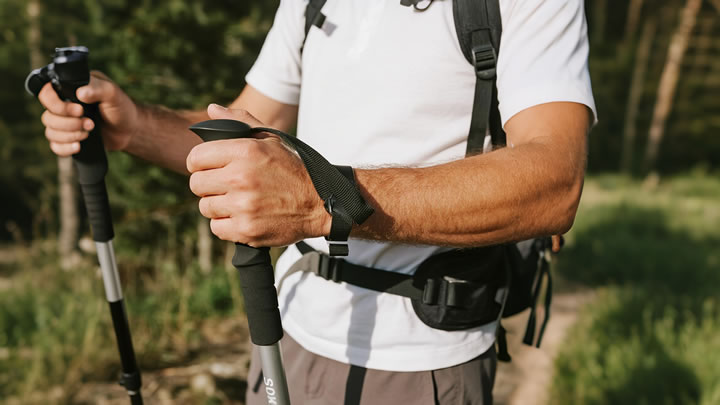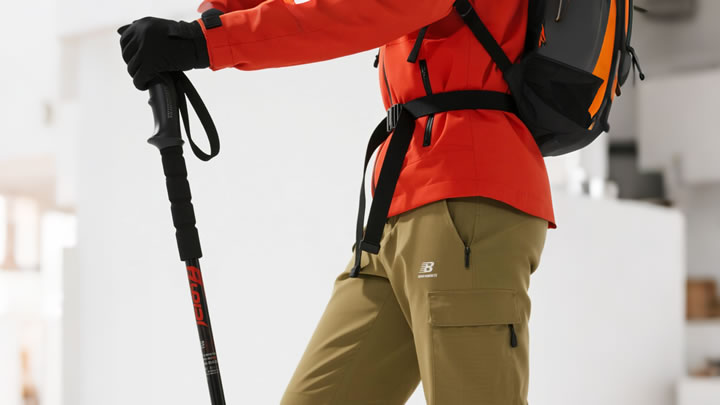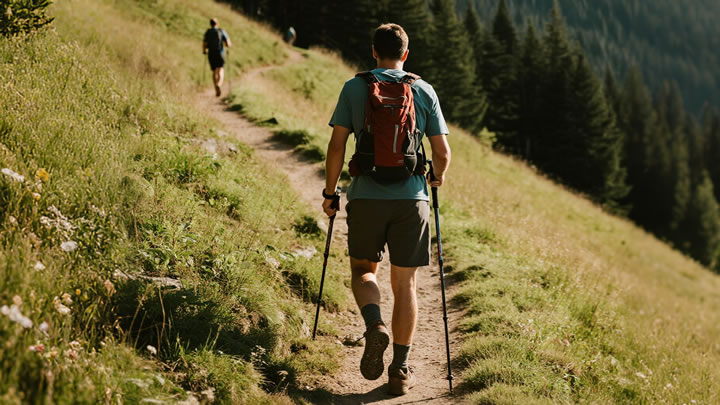How many sections are best in a trekking pole? (3-section vs 4-section vs 5-section)
Wednesday, July 23, 2025
The number of sections in trekking poles directly impacts durability, packability, weight, and trail performance. While 3-section poles dominate traditional hiking, ultralight trends push 4- and 5-section designs. Here’s how to match pole construction to your terrain and packing needs.
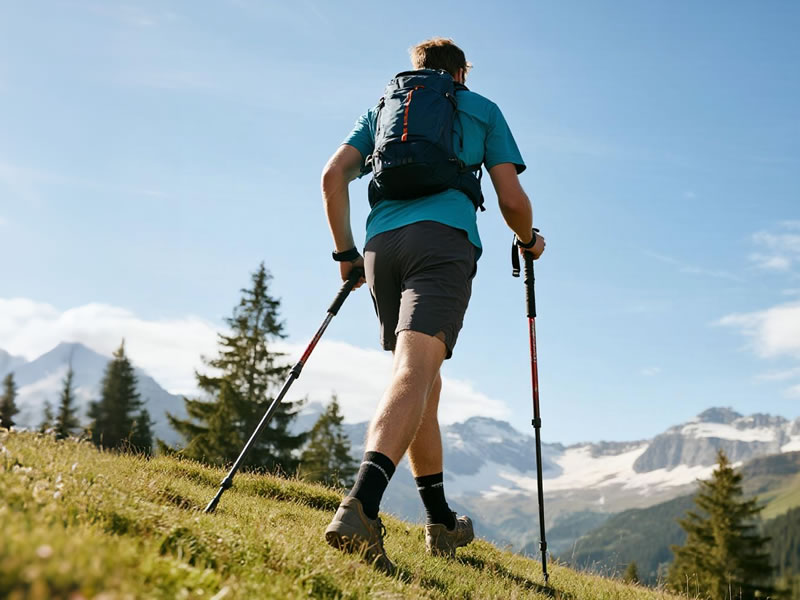
⚙️ Engineering Trade-Offs: Physics of Pole Sections
| Design | Strength | Packed Size | Weight (avg.) | Failure Risk |
|---|---|---|---|---|
| 3-Section | Highest (30% more torsion resistance) | 65–75cm | 400–500g/pole | Loose locks (fixable) |
| 4-Section | Moderate | 45–55cm | 350–420g/pole | Joint flex under load |
| 5-Section | Lowest | 30–40cm | 280–350g/pole | Section snap at stress points |
Data source: Black Diamond & LEKI lab tests (2024)
🏔️ Terrain-Specific Recommendations
1. 3-Section Poles: The All-Rounder
- Best For: Mountaineering, bushwhacking, winter hiking
- Top Models: LEKI Micro Vario (aluminum), Komperdell Vario 4 (carbon)
- Why:Handles >45° lateral forces without buckling (critical on scree)Wider diameter shafts resist rock impactsTool-free length adjustments mid-climb
2. 4-Section Poles: Ultralight Versatility
- Best For: Thru-hiking, variable terrain, travel
- Top Models: Gossamer Gear LT5 (carbon), Black Diamond Alpine FLZ
- Why:Balances 55cm packed size with 90% of 3-section strengthAdjustable for precise ascent/descent tuningSurvives airline baggage handling
3. 5-Section Poles: Minimalist Advantage
- Best For: Fastpacking, trail running, minimalist packs
- Top Models: Black Diamond Distance Z (228g), Fizan Compact 5
- Why:Fits vertically in 20L running vests (35cm length)Z-folding joints deploy 3x faster than telescopicCritical Limitation: Max user weight 250 lbs; avoid rocky terrain
❄️ Cold-Weather Warning: Section Count Matters
- 3-Section: Performs at -30°C (metal contracts uniformly)
- 4/5-Section: Risk of joint seizure below -10°C (differential contraction)
- Pro Fix: Apply silicone lubricant to joints pre-winter (e.g., LEKI Lock Fluid)
⚖️ Real-World Durability Test
*Pacific Crest Trail 2023 Gear Survey (n=412):*
| Pole Type | % Failed Before Canada | Primary Failure Mode |
|---|---|---|
| 3-Section | 12% | Loose lock mechanisms |
| 4-Section | 27% | Bent lower sections |
| 5-Section | 41% | Snapped upper joint |
🔧 Repair & Maintenance Comparison
| Issue | 3-Section Fix | 4/5-Section Fix |
|---|---|---|
| Bent Section | Hammer straight ($0) | Replace segment ($15–$40) |
| Stuck Lock | Disassemble & clean | Often requires full replacement |
| Joint Crack | Rare (thick walls) | Common; epoxy temporary fix |
💡 Pro Selection Guide
- Prioritize Packability?Backpack <40L → 5-section (Distance Z)Traveling w/ suitcase → 4-section (Gossamer Gear LT5)
- Prioritize Durability?Off-trail routes → 3-section aluminum (Komperdell Vario)Heavy loads (>220 lbs) → 3-section carbon (BD Trail Pro)
- Hybrid Solution:LEKI Thermolite: 3-section base + foldable upper (55cm packed)
✅ The Verdict: There’s No Universal "Best"
- Steep/Technical Terrain: 3-section (strength overrules weight savings)
- Thru-Hiking: 4-section (optimal durability-to-packability ratio)
- Speed Missions: 5-section (accept fragility for 35cm pack size)
*"On the Continental Divide Trail’s rockier sections, my 3-section LEKIs survived 10x more impacts than my friend’s 5-section BD Z-poles. For the John Muir Trail? I’d switch to 4-sections."* — Ryan K., Triple Crowner
Critical Tip: Test poles with your pack:
- >50L packs: 3-section stability advantage
- <30L packs: 5-section vertical storage wins
🧰 Maintenance Commandments by Section Count
- 3-Section: Clean lock grit monthly; check for hairline bends
- 4-Section: Lubricate locks every 500km; avoid over-tightening
- 5-Section: Store joints disconnected; flex-test before each hike
Final Wisdom: Rent a 3-section and 5-section for back-to-back hikes. Your terrain will decide.

